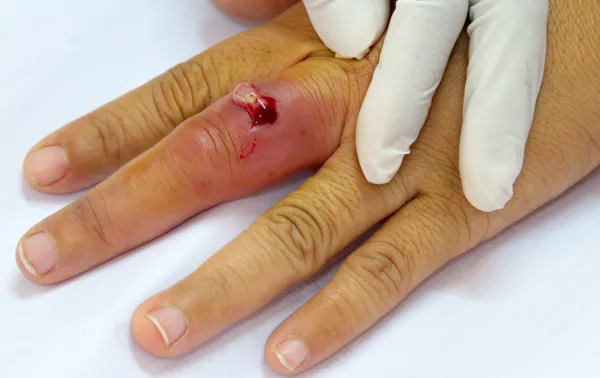Watch Global Period for Repeat Abscess Drainage Procedure
Question: A patient reported back to our physician for a wound check following drainage of a simple abscess in the 1st metatarsal-phalangeal joint of the right foot. Our physician examined the wound and decided to drain it again. How do we report this repeat drainage? Would the same CPT® codes be applicable for incision and drainage of a blister caused due to obesity?
New Jersey Subscriber
Answer: First, you need to know that the CPT® codes for procedural services such as this include, among other things, typical postoperative care for a certain number of days post-procedure. Those days represent the “global period” for the service and are usually 10 days for minor procedures and 90 days for major procedures. Anything outside the global period is generally separately reportable without regard to the original procedure. “Typical postoperative care” within the global period is generally considered part of the original procedure and not separately reportable. There are ways to denote a related service in the global period is not typical postoperative care. Since you have not mentioned the number of days that elapsed since the first drainage, let’s assume that the repeat drainage was within the global period of the original procedure.
The first procedure was incision and drainage (I&D) of a bursa or bursal space on the foot, which you likely coded with either 28001 (Incision and drainage, bursa, foot) or 28002 (Incision and drainage below fascia, with or without tendon sheath involvement, foot; single bursal space).The global period is 10 days for each of these codes.
Since repeat I&D within this period by your physician would not be considered “typical postoperative care” associated with the original procedure, it is appropriate to report the repeat I&D using an appropriate CPT® code that describes the procedure. Assuming that is the same I&D code that you used the first time, you may want to append modifier 76 (Repeat Procedure or Service by Same Physician or Other Qualified Health Care Professional), which indicates that the service was repeated by the same physician subsequent to the original procedure. Alternatively, you could append modifier 58 (Staged or related procedure or service by the same physician during the postoperative period), which indicates that the performance of the service during the postoperative period was, in this case, for therapy following a surgical procedure. You should not report an E/M code for the wound check, since that would be typical postoperative care and thus included in the original procedure.
However, if the patient returned to the clinic beyond 10 days, you could report a code for the drainage and an E/M code such as 99212 (Office or other outpatient visit for the evaluation and management of an established patient, which requires at least 2 of these 3 key components: A problem focused history; A problem focused examination; Straightforward medical decision making...) for the wound check. As noted, anything outside the global period is generally separately reportable without regard to the original procedure.
The incision and drainage of a toe blister (without infection) would generally be considered to be a superficial procedure, for which no specific code exists. Code 10060 describes I&D of a simple abscess (e.g., carbuncle, suppurative hidradenitis, cutaneous or subcutaneous abscess, cyst, furuncle, or paronychia), but that would not apply to an uninfected blister. It is probably most appropriate to include the work of the I&D in your E/M code. If you feel you must report a separate procedure for the I&D of the blister, then you are left with17999 (Unlisted procedure, skin, mucous membrane and subcutaneous tissue), with which you will need to send records explaining and justifying the procedure.




